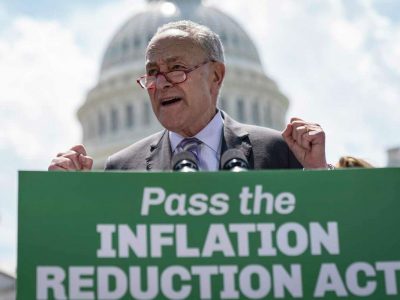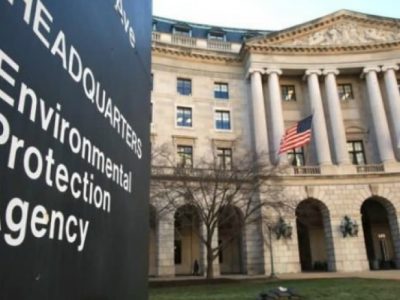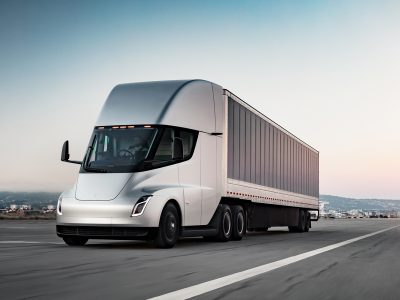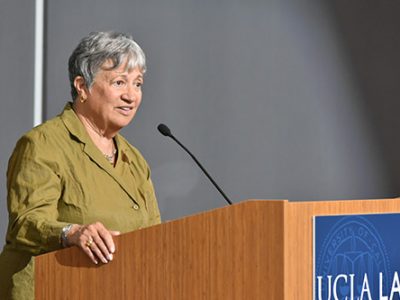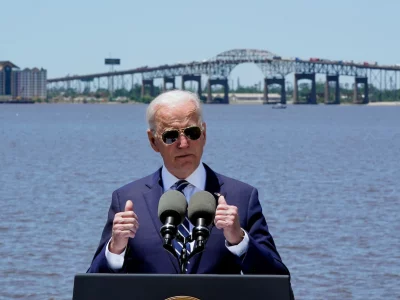Transportation
Keep on Trucking
A new rule will clean up exhaust from new diesels, a major health threat.
Last week, EPA finalized its new rule imposing emission limits on new heavy trucks. The new regulation was clearly a massive undertaking. EPA’s formal announcement of the new rule is 1100 pages long. The accompanying summary of comments on the proposed rule and EPA’s responses is another 2000 pages. This is partly due to the …
Continue reading “Keep on Trucking”
CONTINUE READINGThe Transport Decarbonisation Alliance at COP27
Call to Action on Active Mobility and Deep Dive on Clean Trucks
Last month at COP 27 in Egypt, CLEE partnered with the Transport Decarbonisation Alliance (TDA) and the California Air Resources Board (CARB) as chair of TDA, to convene experts to discuss some of the major next steps in clean transportation. While avoiding the worst of climate change requires a rapid increase in the pace of …
Continue reading “The Transport Decarbonisation Alliance at COP27”
CONTINUE READINGDoes the New Climate Law Expand Regulatory Authority?
It’s not the game changer some people think, but IRA could help in several ways.
There’s been a lot of recent talk about whether the Inflation Reduction Act (IRA) indirectly overrides West Virginia v. EPA. The answer to that is probably “no.” However, some IRA provisions will help lawyers defend certain regulatory actions. IRA may also have an important framing effect when courts are considering the reasonableness of agency actions. …
Continue reading “Does the New Climate Law Expand Regulatory Authority?”
CONTINUE READINGA Three-Prong Attack on Carbon Emissions
A trio of new laws will power the energy transition.
Passage of IRA was clearly a big deal, with nearly $380 billion devoted to climate and other environmental issues. But IRA is only one of the three big climate bills passed in the ten months. The three represent a concerted effort to accelerate the energy transition. The earliest was the Infrastructure Act last November. In …
Continue reading “A Three-Prong Attack on Carbon Emissions”
CONTINUE READINGRegan Hits His Stride
Under Administrator Michael Regan, the Biden EPA is beginning to churn out important new regulatory proposals.
The Trump Administration left a trail of regulatory destruction behind it. Cleaning up the mess and issuing new regulations is Priority #1 for the Biden Administration. Under EPA head Michael Regan, the effort is beginning to pick up steam. EPA has begun the year with several major new regulatory efforts. No one of them is …
Continue reading “Regan Hits His Stride”
CONTINUE READINGWashington State Steps Up
A new law is the latest sign that the future is electrical, not oil.
On the weekend weekend, Governor Jay Inslee signed a major transportation bill. The most dramatic feature of the bill is that it will mostly ban new gas cars in Washington as of 2030. That puts Washington ahead of California, Massachusetts and New York, as well as Canada and Japan. Washington’s deadline is tied with Israel, …
Continue reading “Washington State Steps Up”
CONTINUE READINGEnvironmental Justice, Truck Pollution, and the Biden EPA
How will EPA integrate EJ into its rule making? The answer remains murky.
EPA recently released a notice of proposed rulemaking for pollution from new heavy-duty vehicles. I was interested to see how environmental justice figured into the analysis, looking for clues about how the Biden Administration plans to make EJ part of decision making. What I found wasn’t very enlightening. Perhaps they’re still trying to come up …
Continue reading “Environmental Justice, Truck Pollution, and the Biden EPA”
CONTINUE READINGCarrying the Freight
Decarbonizing trucking comes with some unique challenges.
A quarter of carbon emissions from transportation come from heavy-duty trucks. They are also disproportionate sources of air pollution. Addressing these emissions will be challenging and will require a multi-prong strategy. For distances under a few hundred miles, electrification offers the most promising solution. California and fourteen other states plan to make 30% of new …
Continue reading ” Carrying the Freight”
CONTINUE READINGMary Nichols’ new role at the Emmett Institute
This post is co-authored by Daniel Melling, communications manager at the Emmett Institute The New York Times reported last week that the Biden administration is preparing to restore California’s waiver to set greenhouse gas auto emissions standards stricter than the federal government’s rules. It’s the latest episode in a regulatory saga stretching back to the …
Continue reading “Mary Nichols’ new role at the Emmett Institute”
CONTINUE READINGThe Climate Bill inside the Infrastructure Bill
The US takes a major step forward on the path to carbon neutrality.
Late Friday, the House passed Biden’s infrastructure bill. As the Washington Post aptly observed, the bill is the biggest climate legislation to ever move through Congress. It also attracted key support from some Republicans, which was essential to passing it in both houses of Congress. Biden is pushing for an even bigger companion bill, but …
Continue reading “The Climate Bill inside the Infrastructure Bill”
CONTINUE READING




